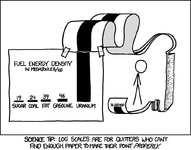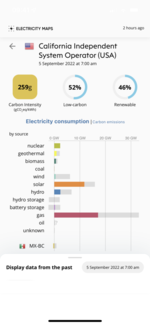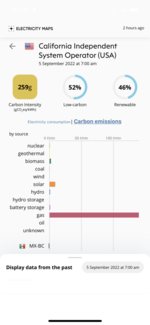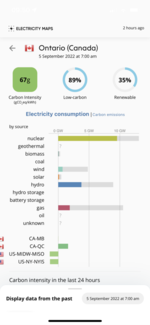Yes alternative energy is not likely to support the global economy going forward. Do we continue burning large amounts of fossil fuels?
That is a yes or no.
Until there is a viable alternative, yes.
"Viable alternatives" don't just magically come into being. You learn how to make better wind farms by building wind farms, not by signing off on new coal plants.
How do you get the wind to blow on a calm day?
How many wind farms do we need to build to find out the answer?
Yes, the fact that we only ever developed one form of renewable energy is a pretty serious flaw with using renewable energy. If only we could investigate some others as well.
It's been done. Solar power is good for domestic hot water as long as you're far enough from the poles and have backup for cloudy days. It's also (like wind power) a cheap option for electricity generation when available, but just like wind power, it requires storage to become a 24x7 power source, and storage is carbon intensive and very expensive, rendering all intermittent power sources unviable for widespread use as a primary power source. It can't work without backup, and currently that backup is almost always fossil fuel, typically gas.
Geothermal works pretty well, but only if you're fortunate enough to live on a hotspot. NZ and Iceland both make good use of it; In the US, Hawaii and the Wyoming/Montana/Idaho region could probably use it. I suspect that the National Parks people might object to turning Yellowstone into an industrial facility though.
Hydropower is very good and widely used; But there are few suitable sites left undeveloped, either as existing hydroelectric plants or for other purposes that block the construction of large reservoirs.
Tidal power suffers from lack of good sites like hydropower does, only more so. Most of the useful tidal power sites would significantly block major shipping infrastructure.
Wave power seems to be very difficult to harvest at a reasonable cost, and also has intermittency issues.
If any of these were viable, we would be doing them by now. Certainly the northern European nations, particularly Germany and the nordic countries, have thrown a lot of money at R&D - so their failure isn't a matter of lack of trying.
There are no 'renewable' sources of electricity that are adequate to power a modern industrial society. Largely this boils down to basic physics - as industrialisation has progressed, we have moved towards higher energy densities for our power sources, and renewable sources tend to be very low energy density. It requires a shitload of materials to harvest wind, sunshine, waves or tides. Hydropower too needs a vast amount of material to harvest, though generally we leave most of it
in situ, which makes it a lot cheaper.
Fossil fuels have pretty high energy density in comparison with renewables, but as we all know, they fuck up our atmosphere if we burn too much of them (and even if they didn't, we would run out of them pretty soon).
If only there was a fuel with far higher energy density than coal, that was so abundant in the lithosphere that it is available to us in effectively limitless quantities. Can
U Think of any?
 https://xkcd.com/1162
https://xkcd.com/1162



